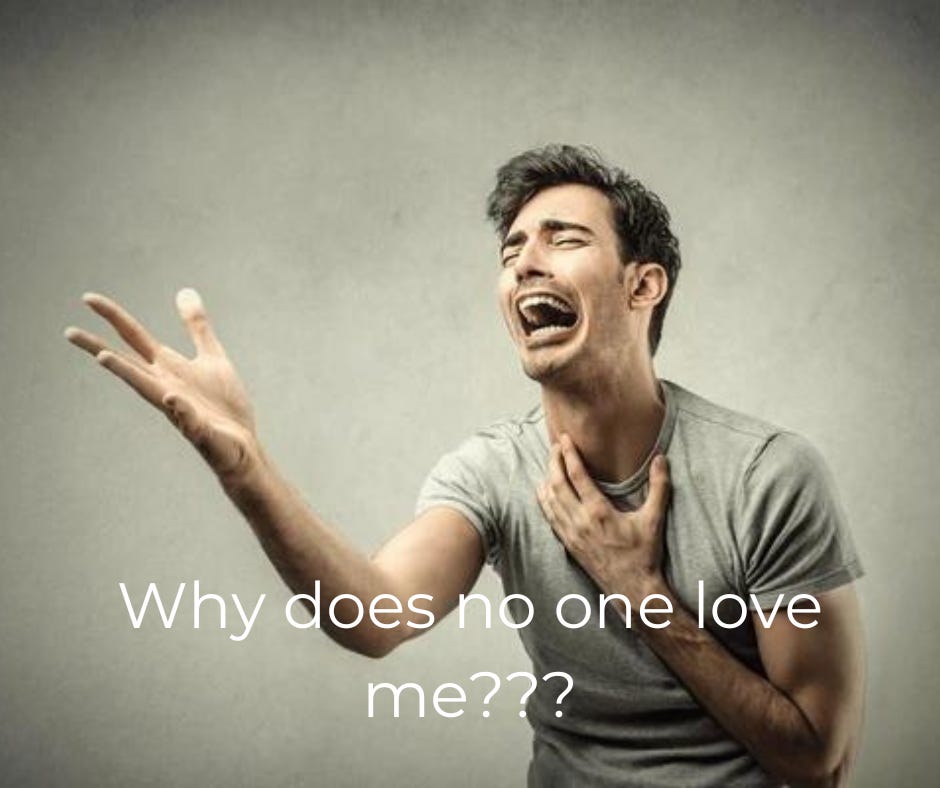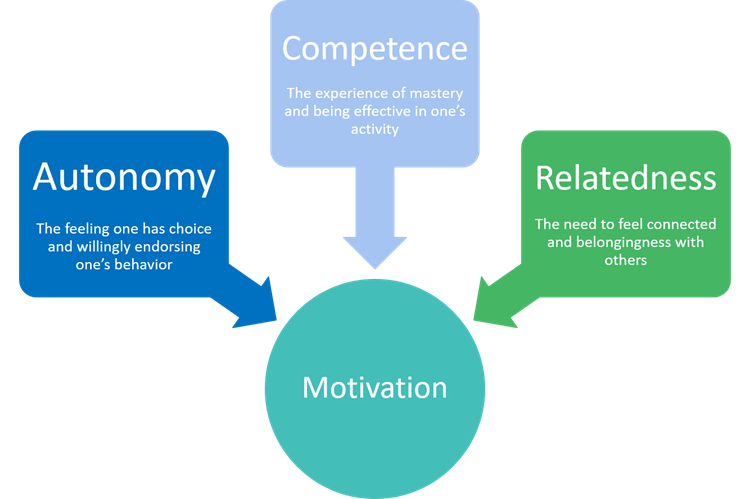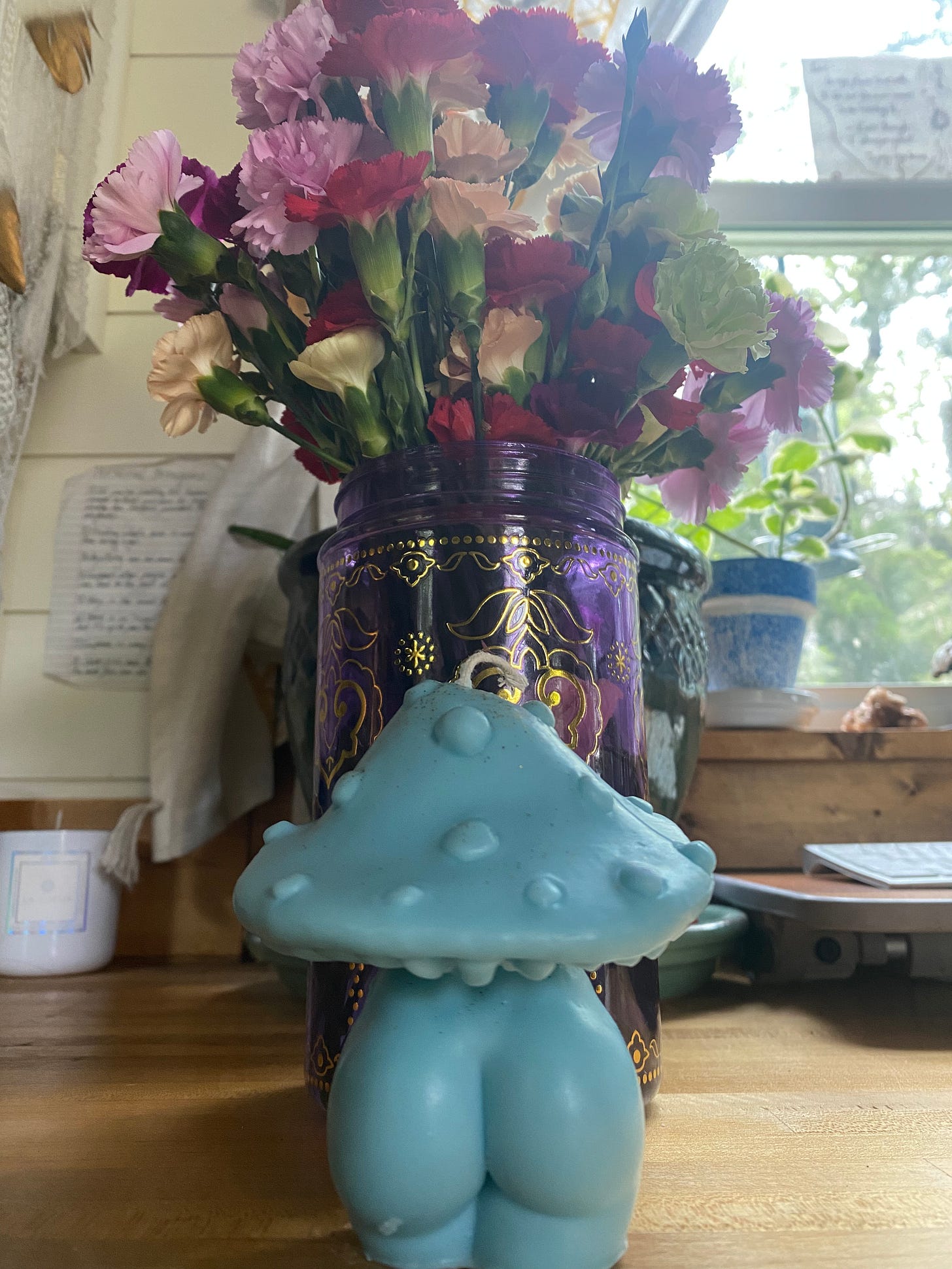Why People Don't Show Up To Your Stuff
and how to make it more likely that they will
Anytime I create an event and people don’t show up, I have a little voice in my brain that says:
“It was me, wasn’t it? I didn’t create a good enough event. I don’t have enough social cred. I have, in some way, secretly offended all of these people and they are only letting me know through their absence. I should probably find an uninhabited hole to crawl into and not emerge until someone comes to get me.”
This article is for all the people like me, who are prone to taking it personally when people don’t respond to our events. We’re all like

When in reality people are at home like

…not thinking about us at all.
What’s a better way to get people to show up?
The Nerdy Bit: Self-Determination Theory
Let’s get science on this shit.
According to self determination theory - a well-founded and -researched hypothesis developed in 1985 by Edward Deci and Richard Ryan - humans have three major motivators:
-
Autonomy, or choice
-
Competence, or mastery/effectiveness
-
Relatedness, or belonging

Because “relatedness” is an awkward word and the creators of this theory are missing out on a great acronym, I’m going to call the last one “belonging”, so these can be the ABCs of Motivation. Yes, I just altered a fundamental theory to serve my own whims. Suck it, science.
Autonomy means that we feel in control of our own decisions and behaviors.
Competence means that we feel able and capable of affecting the outside world.
Relatedness means that we feel valuable and connected to other people.
We exist. We affect. We belong.
Let’s put it into practice.
The Ineffective Invitation
When I first moved to my current home in Bastrop, 30 minutes outside of Austin, I was really excited to host people out here. We have a Texas-beautiful 7 acres of land, a large main house with two living rooms, walking paths, and tiny homes. Of course people would want to come hang out.
One of the first things I tried to hold out here was a candle-making day for a group of women friends. I sent a group message: “Hey everyone! I want to host a candle-making day for us at my place. I’m thinking 6-9pm. Who is interested?” and invited them all to a calendar event. Most of them said yes and RSVP’d.
The day of, there I was, ready with all my supplies. The house was clean. The tea was out. I had put real pants on.
20 minutes before we were supposed to start, the texts began to come in.
“I’m sorry, something came up…”
“I’m really tired tonight…”
“My family is in town…”
I was devastated. Not a single person showed. It was at least a year before I tried to host an event at my house again.
Let’s compare this invitation to a text I literally just got from my housemate Chris.
The Effective Invitation
Dear Friend,
You are lovingly invited to a celebration of life. I will be turning 40 on March 10, and will be hosting a potluck dinner in Bastrop to celebrate. This will be a small gathering of about a dozen. We’ll connect over a meal and then you can all tell me how much you love me 😁. We’ll have connection and games continue after dinner. Depending on the weather, we may have a bonfire and light off fire-flow toys.
Who: You
Where: 235 Woodlands Drive
When: Sunday, March 10
Arrival: 6-6:30pm
Dinner: 6:30pm
Games, Connection, and Such: 8-11pm
GTFO (or camp overnight): 11pm-1am
Other details: This is a potluck. Bring your favorite food to share, something that truly moves your soul as a dish (ideally with no sugar added…but I won’t hold it against you if sugar moves your soul).
I would imagine that most of the people Chris invites to this will say yes. Or, if they can’t make it, they will communicate their reservations right away.
Let’s look at what Chris is doing right, as it pertains to self-determination theory.
Autonomy
-
Give enough information
-
Address roadblocks
-
Choose compelling features
I see the above two pieces as useful for an effective invitation.
First, attendees should know exactly what they’re walking into, so they can make an informed decision of whether or not to attend.
A particular skill point of Chris’ here was to name how many people he expects to be there. Often, for those of us who are more anxious, knowing that a party will only have a dozen carefully-selected people is a better draw than imagining it will have hundreds. Also, since Chris broke the timing down by activity, attendees can now choose to come to part of the event even if they can’t make the whole thing.
He anticipated and addressed a roadblock (distance) by inviting people to stay overnight if necessary.
And, Chris made this a compelling invitation by including good activities. To me, making an event that seems fun (and adapted to the likes of the particular group attending) is respect for people’s autonomy. It acknowledges that they may have other choices for their time, but that this will be a good one. Chris knows that his friends like connection games, they like celebrating him, and that fire is cool. He doesn’t just say “come celebrate me” - he names what is in it for them.
Belonging
-
Invite people specifically
-
Share the level of importance of attendance on the relationship/event
Chris’ mentioning that there would only be a dozen people there does another thing. It lets people know that their attendance is important, and that it will have a noticeable effect if they don’t attend.
If he wanted to create really super extra belonging, he could message each person individually and let them know why he wants them in particular to be there. (For example, view my article about the Living Room, where we put a quote about each attendee on the inside of their invitation envelope.)
For this event, such might only be necessary if there are a few people he really really wants to be there. In that case, what would actually be most effective is to message those people before nailing down a date for the event, and ask them what would be most convenient for them. That bolsters their sense of autonomy and makes them feel enough belonging that they would be unlikely to not attend an event planned around their timing. (Note: I’ve found that this works okay if done with a group poll, but is more effective with 1:1 messages.)
Second, Chris subtly communicates the importance of this event to him, and thus the increased relatedness that would be created by people attending. He says that it’s not just his birthday, it’s his 40th birthday - an important date! My candle-making night showed up as an event like any other, and I didn’t stress that it was important to me for people to attend. Perhaps if I had named “this is the first event I’m hosting out on our property, and I would love to christen my new home with all of you”, I would have gotten better response.
Competence
-
Give a role
-
Name a potential contribution
For contribution, Chris asks participants to bring a potluck item. One of the benefits of this is people have to start thinking of it ahead of time. It stays in their mind to plan for, instead of just showing up on their calendar.
Other ways I’ve seen to do this is ask for particular costuming, musical instruments, or activities to prepare and share.
Something Chris doesn’t do, but which I have seen done and used to good effect, is to give people a role. He could ask if anyone is willing to come and help set up early, help create the bonfire with him, or be the coordinator of connection activities. Then he can communicate 1:1 with those people about timing. Many people would prefer to show up to events where they feel useful.
What you can do for you
Most of this article has focused on how to make effective invitations to others. I want to touch on one more piece: what can you do for you, around events, to increase your satisfaction and chance of success?
-
Know your minimum number
-
Invite a couple ride-or-dies
-
Have a backup plan for your own autonomy
First, know the minimum number of people you would need for an effective event. This keeps you from feeling like “ugh, not everybody showed up! It was a failure!” If you know that only 4 people out of 12 would have to attend for you to have a good time, it’s much less pressure. And you know when you should cancel the event - if less than 4 people are going to show up, you don’t have to feel pressure to still hold the thing. Or if you do, you can be more selfish about the form of it. (I do this all the time on classes and workshops - if only one or two people show up, I either cancel, or turn it into a discussion / Q&A, which is more effective for a small group and more fun for me.)
When you have your minimum number, invite a few people who you know will show up. These are usually people with quieter social lives, who are highly dependable, and/or who are very close friends. They may not be the most spicy-exciting people. But the older I’ve gotten, the more I appreciate loyalty over shine.
Last, and most importantly, have a backup plan that you are excited about. If nobody shows up, or if only one person does, what will you do with your time? Will you make yourself a nice meal and watch a favorite movie? Will you do the group activity yourself? Will you take yourself out to a friend’s event? Will you write texts of impact to everyone who didn’t attend, so they understand that it mattered to you that they weren’t there? Think of how you will make things right for you and your relationships, even if the first plan didn’t work.
For instance, on the candle making night that no women attended, I had a pretty fun time making candles with my ride-or-die - my husband.

I hope this article helps you plan and enjoy your next event even more!
Your loving thought-dom,
Sara
P.S.
If this article spoke to you—if you’ve ever poured your heart into an event and wondered why no one showed up, or if you want to design experiences that people don’t just attend but rave about—then I’d love to invite you deeper into this work.
Our TAF Level 2: Designing for Connection course is an 8-week intensive where you’ll learn to craft gatherings that captivate, engage, and transform. Whether you’re running corporate trainings, community meetups, or game nights, this course will help you design events that work—ones where people leave feeling moved, connected, and eager to come back.
Or, if you’re ready to go even further and make a profession out of this skillset, TAF Level 3: Creating a Profession will help you integrate your facilitation skills into leadership, consulting, and community-building—so you can turn your expertise into paid work.
If you're ready to level up your facilitation, check them out here!






Responses